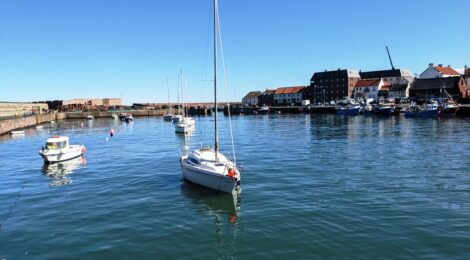
Now and then
For the last month of 2021, we will look at three more postcards, this time of the former outdoor swimming pool in Dunbar. The pool was a great attraction particularly in the 1950s and 1960s when it attracted many tourists.
The postcard above from 1969 shows a busy day at the pool, with many people enjoying the water or the warm sunshine at the edge of the pool. The pool is dominated by the Doo Rock, which was wrongly named on some postcards as Dhu Rock i.e. Black Rock. Maps from the 1890s clearly label this as Dove Rock. While the pool is no longer there, the view behind the pool has not changed and the fishing boat approaching the harbour and surrounded by seagulls is still a common sight today.
The message on the back of the postcard begins traditionally, with “Enjoying our holiday very much. The change is doing us a lot of good”. This is followed by a health report “Norman looks a lot better”. It then begins to resemble a letter “Sorry we won’t be able to visit you this time” and becomes more intriguing. “I’m dying to know if you have had any news yet?”. So this postcard varies from the usual “Weather is lovely. Wish you were here”. Or less politely “Weather is here. Wish you were lovely”. The postcard on the back refers to “The Bathing Pool, Dunbar” and there were a number of names given to the pool over the decades.
Above is today’s view but with less elevation, of the area depicted on the front of the postcard. When the outdoor pool was demolished in the 1980s, it was generally agreed that the restoration of the site back to its natural state had been very successful.

The postcard front above shows the Ladies Bathing Pool in 1919. Mixed bathing pools came later and at different times across the UK. The John Gray Centre tells us that “The first design for the pool was built in the late 1880s and contained brick and concrete dressing houses. Even at the time it was considered a work in progress and had plans for an upgrade and a new Pavilion at the ladies pool built in 1904. It consisted of 14 dressing rooms and a seated veranda”. If you enlarge the photo, you will see that on the right hand side of the pool, there is a concrete sea wall, but it is not at a height to stop the sea coming into the pool at high tide. Also the area in front of the pavilion is still rock and sand. This site tells us that the estimated date of when this photo was registered as a Valentine’s postcard was 1913.
The back of the card reads “Dunbar. Thought this P.P.C. might interest you”. Note the use of the P.P.C. i.e. Picture Post Card and this is how postcards would have been referred to at the time. Again, the greeting is followed by news which might normally have gone in a letter. “Uncle John is not very well [and] he has a very sore throat & it is so important to get well again. Of course it is the busy time”. What we do not know is a) whether Uncle John is on holiday with the person (no name, just love & xx) or this is general news and b) the busy time for what? Uncle John’s business? The final line is “love to baby boy and Walter”. Another sign of the times and the status of women is that the (picture) postcard is addressed to “Mrs Walter Falgate”. It was hard to work out the first line of the address, so contact was made with Cambridge Central Library. From there, Mary Burgess replied “Checking the 1919 Spalding’s Directory of Cambridge (page 28), I have discovered that Walter Robert Falgate lived at Rotherwick House”. This substantial house – see here for the house today – would indicate that the Falgates were a reasonably wealthy family. It is now only known as 20 Cavendish Avenue.
With the postcard above, we move on to 1927. This is another Valentine’s postcard and it is estimated that the photograph was registered in 1925. The John Gray Centre tells us “The popularity of the pool led to more improvements in the early 1920s when the wall separating the sea and the pool was raised and a promenade was added. Several years later in 1928 a boating pond was added, and only 1 year later in 1929 further extensions were made”. As you can see from the photo above, there has been a great improvement in the pool on the pavilion side, with areas for seating as well as two lines of deck chairs, probably with the best view across the pool. There appears to be an event taking place on the photo and the back of the postcard below gives us a clue. There are also diving boards in front of the pavilion. In the 1969 postcard, the diving boards are at the opposite end of the pool. One significant change from 1919 is that the name of the pool has been changed – on this postcard at least – from Ladies Bathing Pool to The Swimming Pond, indicating a move to mixed bathing.
The writing on the back of the postcard is very faint but should be clearer in the enhanced version. The message reads “What do you think of this for Dunbar [?]. We were at a swimming gala last Sat and it was very much like this. Have enjoyed ourselves immensely but the time has just flown. I suppose you will be on holiday now. Will see you soon. Love Isobel and Mary (possibly). It is addressed to “Miss Hamilton, Smailholm, by Kelso, Roxburghshire”. The John Gray Centre tells us, on pages devoted to the Brr exhibition on Dunbar’s outdoor pool, that “In the late 1920s the [Dunbar] Swimming Gala Committee of three Council members liaised with the local swimming club to promote the swimming galas over the summer”. The outdoor pool was the arena for many swimming galas continued through the decades, and were very popular in the 1950s and 1960s in particular. Smailholm Mains is now a holiday cottage.
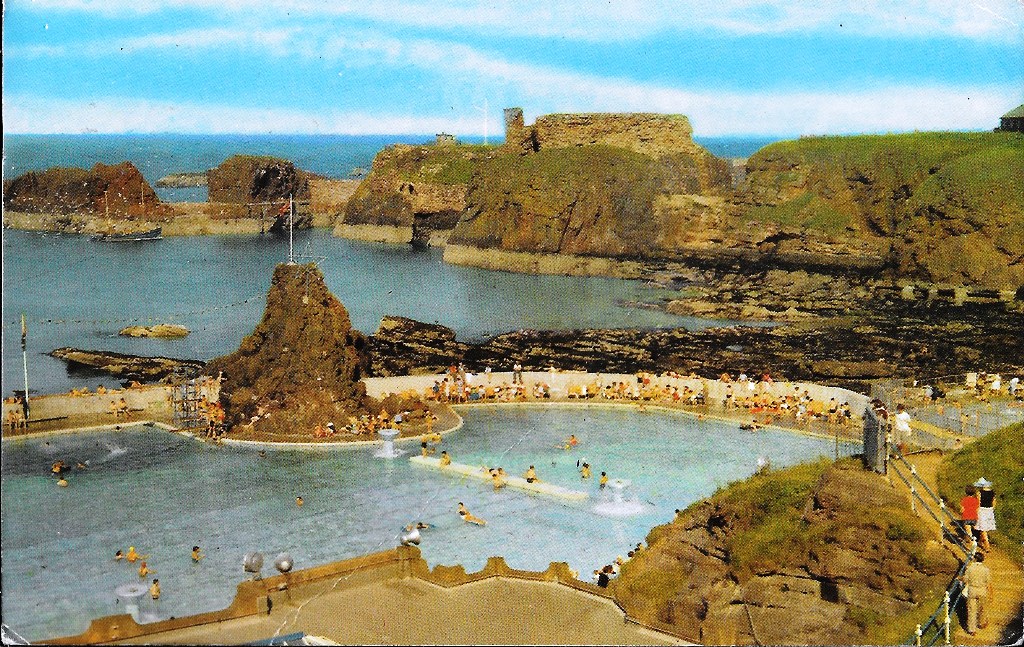
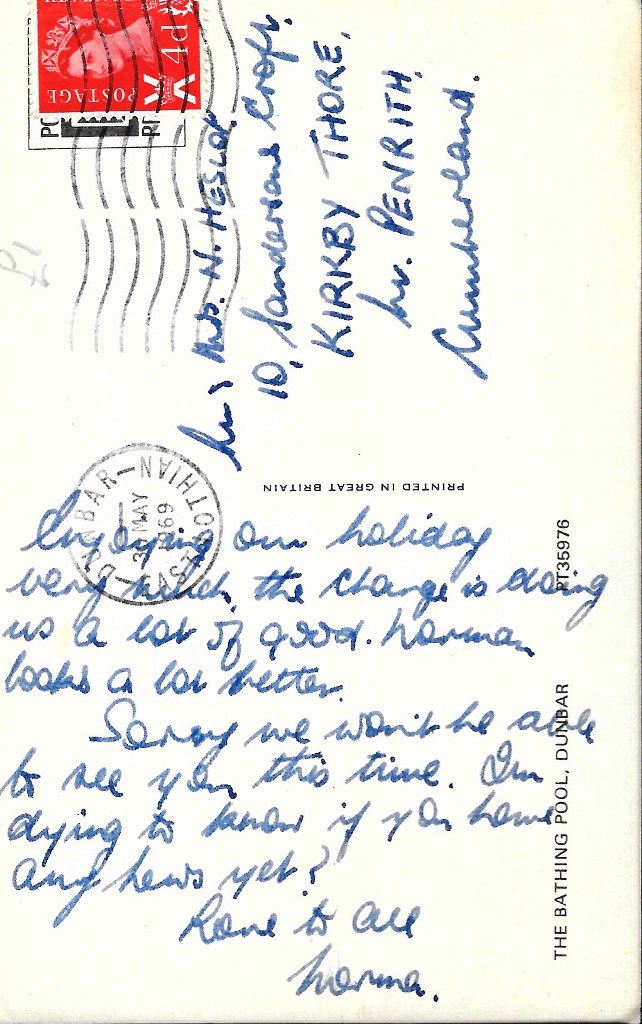

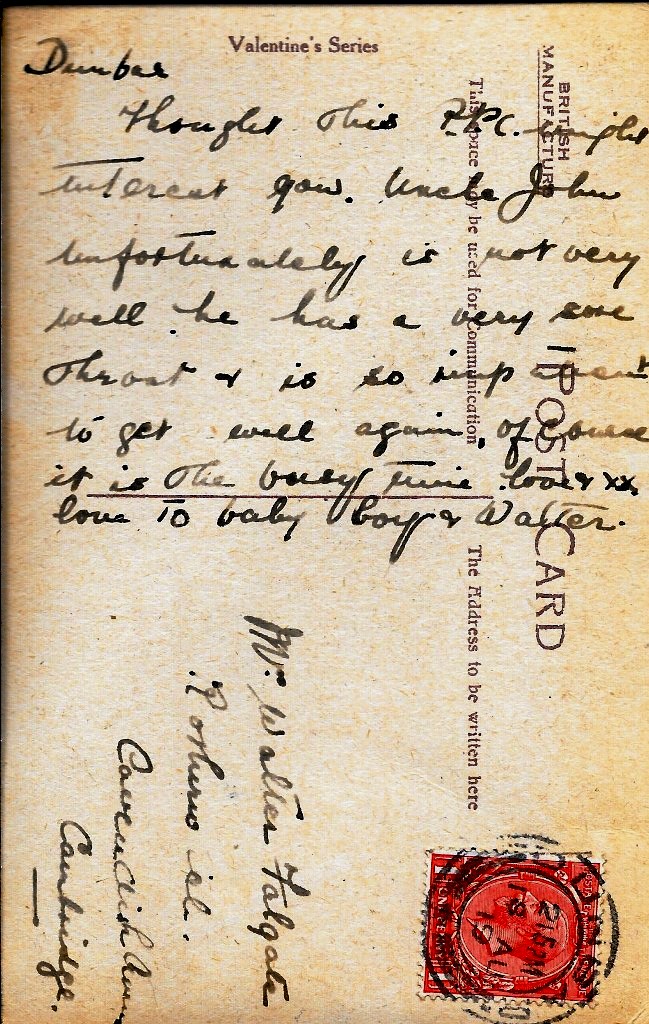
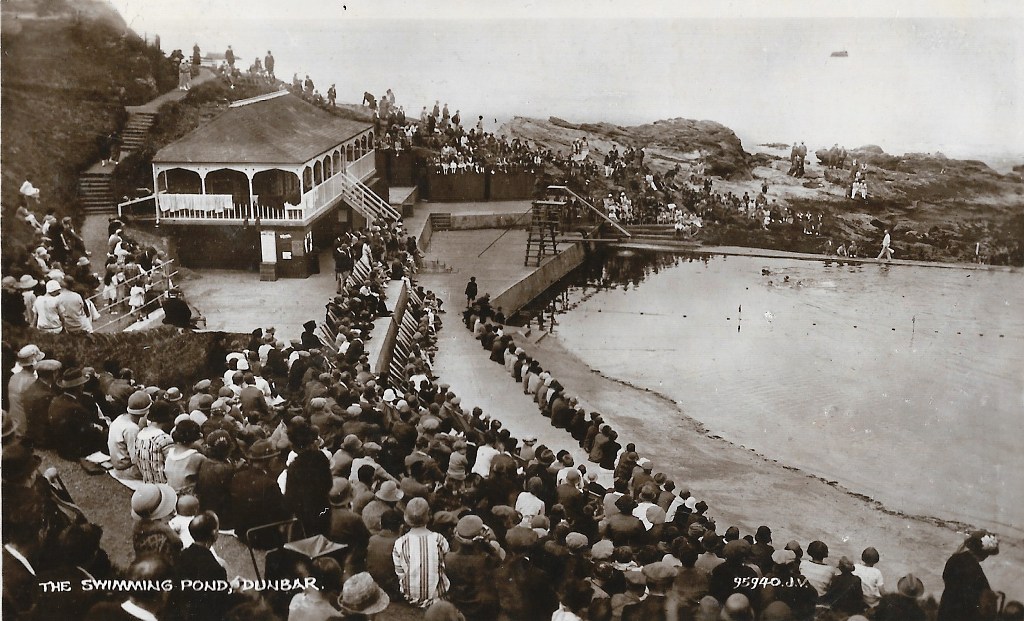
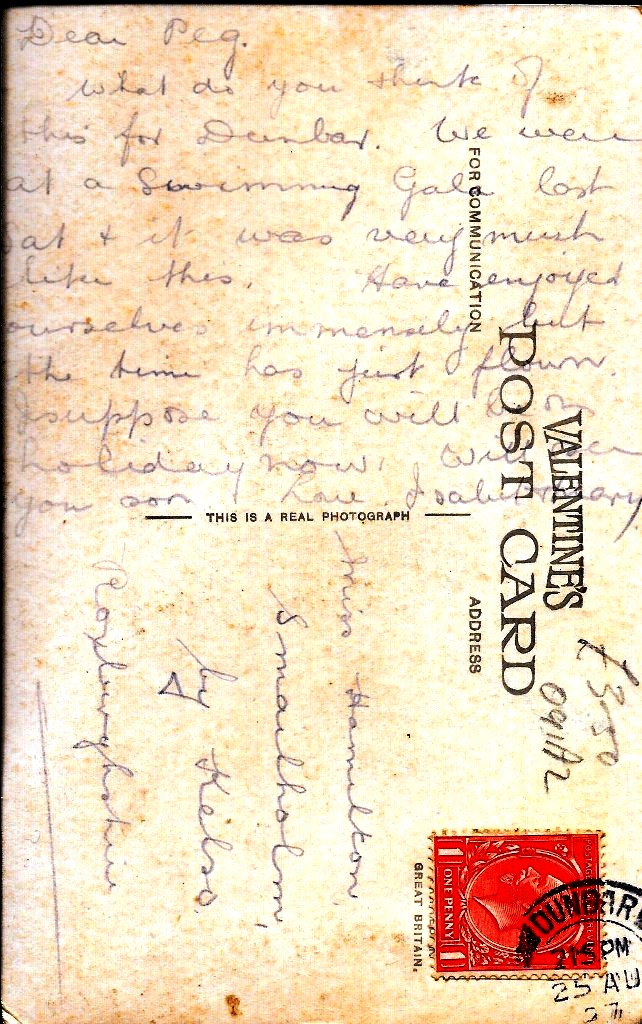
You must be logged in to post a comment.